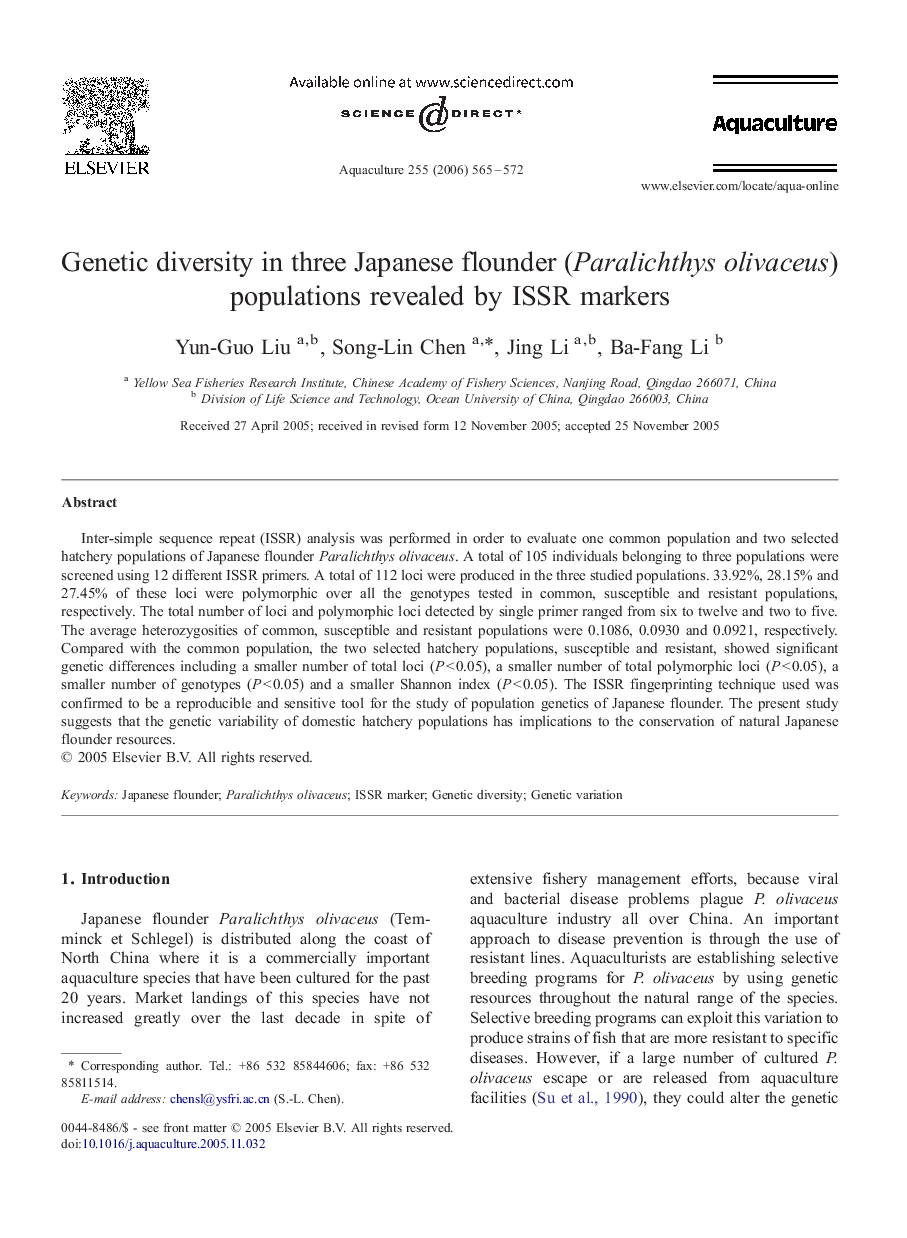| Article ID | Journal | Published Year | Pages | File Type |
|---|---|---|---|---|
| 2426113 | Aquaculture | 2006 | 8 Pages |
Inter-simple sequence repeat (ISSR) analysis was performed in order to evaluate one common population and two selected hatchery populations of Japanese flounder Paralichthys olivaceus. A total of 105 individuals belonging to three populations were screened using 12 different ISSR primers. A total of 112 loci were produced in the three studied populations. 33.92%, 28.15% and 27.45% of these loci were polymorphic over all the genotypes tested in common, susceptible and resistant populations, respectively. The total number of loci and polymorphic loci detected by single primer ranged from six to twelve and two to five. The average heterozygosities of common, susceptible and resistant populations were 0.1086, 0.0930 and 0.0921, respectively. Compared with the common population, the two selected hatchery populations, susceptible and resistant, showed significant genetic differences including a smaller number of total loci (P < 0.05), a smaller number of total polymorphic loci (P < 0.05), a smaller number of genotypes (P < 0.05) and a smaller Shannon index (P < 0.05). The ISSR fingerprinting technique used was confirmed to be a reproducible and sensitive tool for the study of population genetics of Japanese flounder. The present study suggests that the genetic variability of domestic hatchery populations has implications to the conservation of natural Japanese flounder resources.
